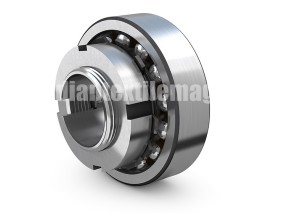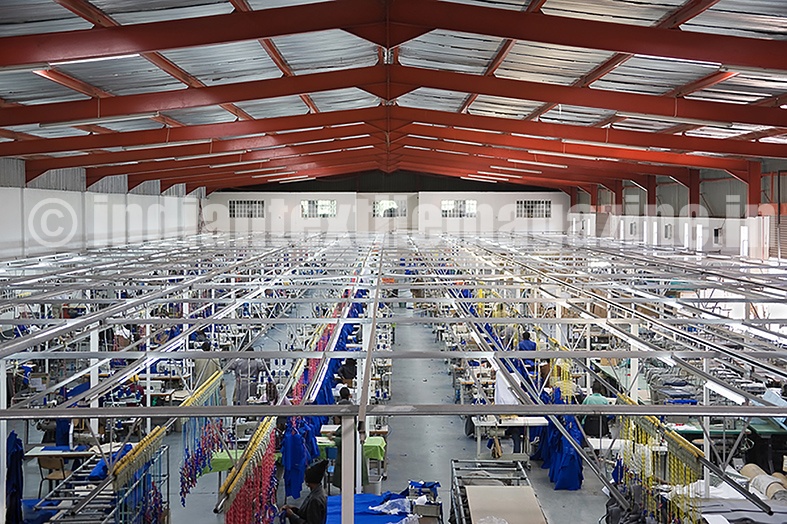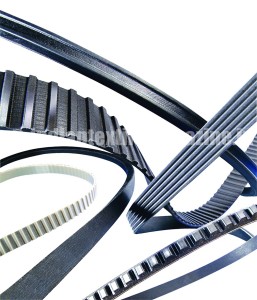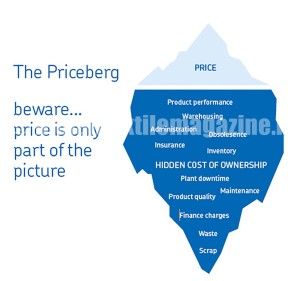The Indian textile industry is one of the oldest ones. Even today, textiles sector is one of the largest contributors to India’s exports with approximately 11 per cent of total exports valued at over $40 billion. In GDP terms too, the sector is important with contributions amounting of five per cent to the GDP. Even on the technology front, India’s textile industry has taken big strides to bring in state-of-the-art equipment from OEMs across the globe.
Textiles is an important segment for SKF operations. SKF has been working closely with many customers (original equipment manufacturers and end users) from the textile sector. SKF has technical superiority to provide innovative low friction bearings and customized solutions across all the stages of manufacturing for extended service life. It is also providing rotating equipment performance support with an aim to understand the customer’s specific issues and provide solutions that reduce the cost of maintenance and repairing.
SKF has a wide range of sealed self-aligning bearings and maintenance-free Y-bearing units for carrying loads and bearing shocks, special bearings made of polymer and stainless steel for washing ranges, pre-lubricated linear bearings/shafts for hemming machines. SKF also provides lubrication systems and power transmission products for specialized applications in the textile industry. Besides having a wide product range, it can also customize solutions as per customer-specific requirements.
The net effect of these solutions is an increase in efficiency by extending the mean time between failures (MTBF), increased operator safety by reducing repetitive manual task in hot and slippery environments, waste reduction which is in compliance with latest environmental regulations and overall energy saving.
Many of SKF low friction series bearings have become a standard part of the twisting spindles. SKF’s customized solutions have already helped a number of industry leaders in the textile sector. One of its fabric processing customers was facing frequent bearing failure on equipment due to exposure to steam, chemical and seal breaches. The OEM bearing supply was leading to high delivery times and higher costs, and there was no appropriate replacement available. SKF customized this bearing to such a degree that it surpassed the expected bearings life by 30 per cent. In another similar instance in a CBR, SKF replaced a self-aligning roller bearing with a self-aligning ball bearings and customized to meet the application requirements, thereby doubling the life and halving the costs!
Procurement professionals who instead buy with an eye on long-term value are making a more measured and ultimately profitable purchasing decision. They are also employing the basics of a Total Cost of Ownership (TCO) analysis. By looking at a product’s total cost of acquisition and its lifetime operating costs, TCO tries to uncover that product’s total economic value for the buyer. Accordingly, the term “TCO” has in recent years become increasingly recognized as TBO, or Total Benefit of Ownership, a term much more reflective of its positive potential.
According to a recent study conducted by the Manufacturers’ Alliance for Productivity and Innovation, companies that choose and measure suppliers based on TCO are 35 per cent more profitable than the ones that do not have a formal plan or focus on price-based components.
If you look at the cost of a product you are making, 50-75 per cent of that cost is likely due to what you’re purchasing. The buying pattern follows the Ice-berg theory, where the buyer sees only the tip and overlooks the depth! They end up with a huge impact on their cost of operations.
A changing purchasing paradigm
Some procurement organizations still prefer to work with suppliers who practise feature, friendship and price-based selling. But as the procurement function has become increasingly sophisticated, purchasing professionals in best-in-class companies have shifted their way of thinking from “buy from the seller that I like who has a good product and competitive price,” to “buy from the seller who has the best total solution and terms that maximize the economic benefit to my company – one that can back up those benefits with real numbers so I can prove it to management.”
Purchasing professionals are increasingly recognizing that this can be a penny-wise, pound-foolish approach. How many times have you bought the lowest-priced or good-enough product, only to find that the supposed savings never made it to your company’s bottom Line?
With the change in technology, faster demands and high quality demands, customers in the textile industry are no more price conscious, but they are looking for a reliable solution that ensures lower down time and breakdowns. The cost of a breakdown is often more expensive for an industry leader when compared to the cost of a good.
SKF understands this well and all its products aim to provide “winning solutions to winning organizations”.



